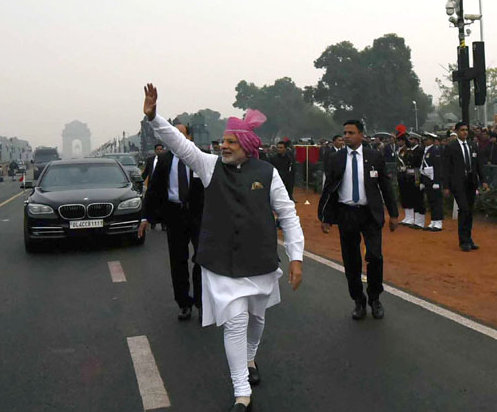 http://www.pmindia.gov.in
http://www.pmindia.gov.in
Understanding the Indian Election Results
By Ricky Gandhi, ASP Junior Adjunct Fellow
BJP in Control
Thursday, March 9, saw the conclusion of five of India’s Legislative Assembly elections. The resulting landslide by Prime Minister Narendra Modi’s party, the Bharatiya Janata Party (BJP), stems from the PM’s extreme popularity. In September, he boasted an astronomical 81% approval rating. The population also felt general satisfaction with the economy and India’s growing international standing.
In addition, 82% of the population also favored Modi’s controversial demonetization policy. Designed to curb black money, counterfeiting, and modernizing the economy, it also had adverse impacts on local businesses, as all 500 and 100 rupee notes abruptly ceased to become legal tender in a heavily cash-dependent country.
The results of the policy so far have been mixed. Economists expected this move to decrease growth, but this did not happen (at least not yet). Black money has found alternative routes, and counterfeiting could once again become an issue in the future. However, individuals are increasingly adapting to electronic payments, which signals a path towards modernizing the economy.
The elections, then, became sort of a referendum on Modi and the BJP’s handling of domestic and international affairs. Eyes remained focused on Uttar Pradesh — India’s most populous state. The BJP and alliance dominated, amassing 324 out of 403 seats. The BJP also took 57 out of 70 seats in Uttarakhand and had a good showing in Manipur (21 out of 60) and Goa (13 out of 40). Punjab served as the Congress Party’s only major victory (77 out of 117).
India’s Future
These record-breaking results signal the clearest mandate the BJP has ever had. This allows Modi to push through many of his policy aims with even less resistance than before, potentially streamlining the many projects stymied by bureaucracy. Modi also has made clear his intentions of combating corruption. Considering India ranks 79 out of 176 in Transparency International’s Corruption Index, tackling the issue can both boost India’s prestige and ease of doing business ranking, which sits at a dismal 130 out of 190.
The mandate, though, might not rest well with religious minorities. The BJP originally arose from the Rashtriya Swayamsevak Sangh (RSS) — a Hindu nationalist organization. Staying true to RSS ideology, the BJP has historically promoted “Hindutva,” or the concept of “one nation, one culture, and one country.” Their platform completely contradicts India’s perceived secularism, causing many minorities to become severely ostracized.
With the rise of the BJP, it seems even less likely that the government will address the concerns of religious minorities. Despite protests against growing intolerance (as evidenced by a Muslim lynching), the party continues to appeal to Hindus and Hindu nationalism. This, mixed with populist measures, resulted in a remarkable electoral success. As long as this strategy works, religious minorities and secularists will continue to live in isolation.
The United States’ Future
Modi’s reputation in the U.S. has gone from shunned to revered. The previous administration and Congress both realized the potential for economic and military partnership with India. Due to Modi’s increasing mandate, such cooperation will become easier as the PM will face much less obstruction than his predecessor, Manmohan Singh.
As such, the U.S. should take this opportunity to promote bilateral trade agreements. The United States and India should also work towards establishing joint military operations that can serve their common interests, especially counterterrorism. Lastly, the U.S. could and should improve its outreach to India by offering assistance in combating corruption.
Corruption in India has a fairly long history, and has ballooned into the current situation seen today. Failure to acknowledge its role in the economy would only serve to hinder trade and economic development. This is why organizations such as USAID should promote anti-corruption campaigns in India, similar to what occurs in Ukraine.
These efforts would not only help achieve Modi’s goal in creating a “New India,” they would also serve and promote the interests of the United States. The new U.S. administration must realize this opportunity, and set the groundwork for a defining U.S.-Indian relationship in the 21st century.





